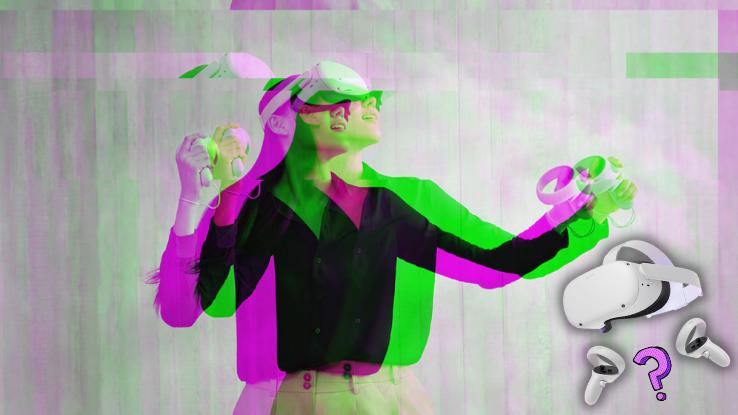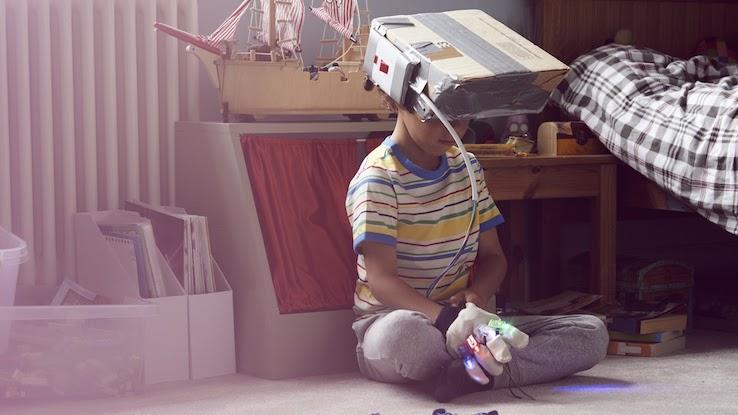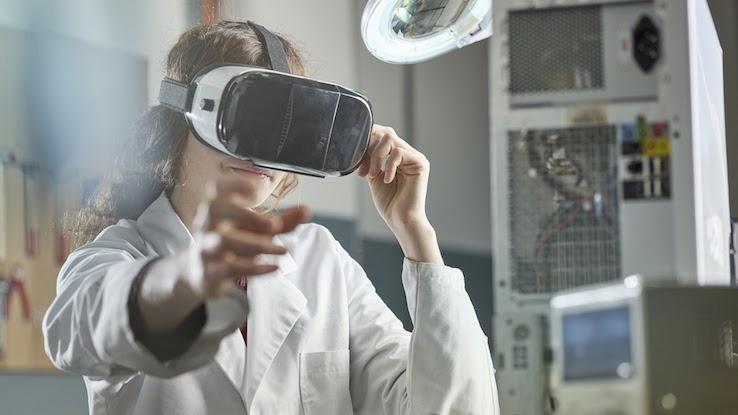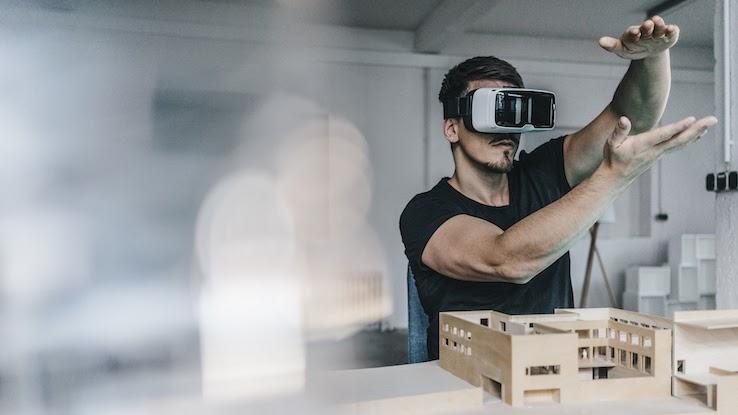How To Upload Avatars To Vr Chat Blender

Virtual reality (VR), which simulates experiences that are either similar to the real globe of entirely invented, has go increasingly pop over the contempo years. Instead of beingness something fringe and almost sci-fi, the tech used has become more widely available, allowing developers to employ VR platforms in video game development — and across.
Equally is the case with video games, VR platforms are now being leveraged past the likes of everyone from healthcare professionals to existent-estate agents considering the simulation-creating tech allows them to create a better, more valuable patient, or customer, experience. While screens allow us to peer into worlds, VR tech really immerses u.s.a. in three-dimensional worlds.
Yes, it all sounds pretty high-tech, but yous tin can easily scoop up a VR headset at your local Best Buy if yous're and so inclined. The merely problem? There are a lot of options out in that location — and a VR headset can be quite the investment. So, if you're a beginner, is something like the always-pop Oculus Quest 2 your all-time bet for taking that kickoff footstep into VR experiences? Let's observe out.
The Origins of VR Platforms
Humankind's interest in entering invented worlds and virtual realities has existed for quite some time. In fact, explorations into virtual reality stretch farther dorsum then you might think — long earlier the efforts of modernistic-day video game companies, and even earlier we all became obsessed with The Matrix's simulation.
In the 1930s, science fiction writer Stanley G. Weinbaum was amid the starting time to predict the appearance of VR. InPygmalion'due south Spectacles, a story from 1935, the visionary wrote about goggles that allowed the wearer to experience sensory, holographic worlds. The notion of VR would reoccur in other well-known sci-fi works, including Ray Bradbury'southward 1950 short story The Veldt, which tells the story of a family unit that lives an automated (or "smart") home. One of the habitation'due south wonders is the "nursery," a virtual reality room that creates reproductions of any identify the family'south children imagine.
Outside of fiction and sci-fi speculation, attempts at creating immersive, 3D worlds stretch back even farther. For example, panoramic paintings and murals of the 1800s sought to transport viewers into realistic scenes, albeit without other sensory or mechanically aided efforts. Just a real leap forward came in 1838 with Charles Wheatstone'south foray into stereoscopic photos.

"Wheatstone's research demonstrated that the encephalon processes the unlike two-dimensional images from each eye into a single object of three dimensions," the Virtual Reality Lodge explains. "Viewing two side by side stereoscopic images or photos through a stereoscope gave the user a sense of depth and immersion." This, of form, led to the development of the View-Master, which was patented in 1939 and gave rise to a kind of unique virtual tourism feel. The Virtual Reality Club likewise points out that Edward Link'due south "Link Trainer," a 1929 electromechanical flight simulator, likewise has ties to early on VR development, namely because it was meant to immerse would-be pilots into the feel of flight.
Another huge bound forrad came in the 1950s when cinematographer Morton Heilig created Sensorama, which, equally the name implies, was meant to stimulate all of the senses, across only sight and sound. By 1960, Heilig had as well invented the and then-called Telesphere Mask, the offset head-mounted display (HMD) ever created. Over the adjacent 30 years, companies, inventors and visionaries alike tried to create VR tech and experiences, leading to the development of more HMDs and flight sims. Notably, there were besides more than unique developments, including MIT's Pic Map in 1977 — a organisation that let users explore a virtual Aspen, Colorado, non similar Google's Street View — and the Sayre Gloves in 1982, which, according to the Virtual Reality Social club were gloves "wired to a computer arrangement and used optical sensors to detect finger movement."
Of course, in these early on days, VR tech wasn't all that accessible. Sure, the Sayre Gloves may sound a lot like PlayStation Motility'south move wands or, you know, HAPTX gloves, merely even in the '70s and '80s VR and side by side tech were used by the likes of NASA, not gamers. In 1993, that all changed — or, at the very least, video game company Sega hoped that would change. The company backside Sonic the Hedgehog released its own VR headset for the popular Sega Genesis video game console, but, in the wake of several evolution challenges and a steep price-point, the endeavor flopped. The Sega VR-1 and Nintendo'southward Virtual Boy, which came out over the next few years, didn't see much success either.
While the video game manufacture would pivot slightly to motion control — think Nintendo'due south Wii — and other more mild VR experiences, folks in tech were still researching VR as a feasible industry. In 2007, Google added the Street View power to their Maps service, allowing users to (most) stand anywhere in the world and view 360-degree images. Google seemed poised to be the leader in VR tech, only the company'south launch of both Google Glass and Google Paper-thin came in the wake of a successful 2012 Kickstarter campaign. The campaign in question was an effort to fund Palmer Lucky'southward prototype headset, the Rift, and it raised most $two.five 1000000. Despite Sega and Nintendo's before failures, it became articulate that VR had true commercial potential again — then much so that Facebook bought Lucky's Oculus engineering in 2014. And that brings u.s. dorsum to the Oculus Quest 2.
In 2010, Palmer Lucky created a kit VR headset, "Oculus Rift," which would go on to irrevocably change the VR landscape. Equally mentioned above, Lucky would go on to rise over $2 million to fund his development process, and, in a relatively short amount of time, his tech became the gold standard. In 2014, established tech giants entered the fray, realizing the commercial value of accessible, mainstream VR platforms. Facebook, of course, purchased the Oculus tech from Lucky, but Google launched Cardboard, and Sony announced that a VR component would be developed for the PlayStation 4 (PS4).

With the likes of Oculus and the HTC Vive leading the way, the VR smash began. Oculus launched its half-dome HMD in 2018, which allowed users to experience a very wide field of view (140 degrees, to be exact), and, that aforementioned year, introduced users to both Oculus Go and Oculus Quest. These HMDs ready the benchmark for standalone VR. In detail, Oculus Become offered an affordable option for users. Much like gaming PCs, headsets were pricing more casual (or curious) would-be users out.
Most recently, the Oculus Quest ii was released in October of 2020. The most advanced all-in-1 VR arrangement out there, Oculus Quest ii provides an immersive experience for users and shows the capabilities of next-gen gaming, including full-body and hand tracking abilities. Just is the Oculus Quest ii the correct selection for you?
Which VR Platform Is Best for New Users?
Despite the COVID-19 pandemic, 2020 saw the global VR market valued at over $15 billion. Moreover, it'south expected to grow at a charge per unit of xviii% until 2028. Right now, five major players dominate the market — Oculus, Sony, Samsung, Google and Lenovo Grouping. Each of these companies has created platforms and tech that are both immersive and entertaining.

So, which is all-time? That'due south kind of difficult to say outright. Merely when information technology comes to folks who are just getting into VR, a few options exercise stand up out:
- The Oculus Quest 2 has been said to be one of the best VR platforms on the market. With improved eyes, smoother software, and more precise controls, the Quest 2 is a real footstep to a higher place its predecessor. And, unlike other VR platforms, more welcoming and mainstream. While GamesRadar+ points that the actual headset feels a bit inexpensive, the site's review also notes that "If you lot've been waiting to get into VR, only accept been put off past the requirements of a super-powerful gaming PC, and then let us tell you lot why the Oculus Quest 2 is the VR headset y'all need in your life correct now."
- The HP Reverb G2 has been known to offer the highest resolution quality for PC gamers. That power puts it a notch to a higher place the Oculus Quest 2, but it'south likewise clear that the HMDs are intended for different audiences. Our advice? If yous're already a PC gamer, you might adopt the HP Reverb G2 (and its specs).
- TheSony PlayStation VR is too peachy option for newer VR users. It's an excellent choice for video games and tin can likewise exist used for a broad range of other VR activities. While a video game console-based headset isn't going to give you the horsepower of a PC-based one, information technology's withal a great option for folks who already have a PlayStation 4 (or 5) and want to test out VR.
Meliorate, more attainable tech makes room for greater innovation, which means that many companies are broadening — or poised to broaden — their VR prospects. When choosing which VR platform is correct for you, a lot of it boils down to how you lot intend to utilise the headset — as well equally your gaming background — but it'south clear that the Oculus Quest 2 is worth looking into for folks who are new to VR.
Different Ways to Utilise VR Platforms
As new VR-related tech emerges, its use cases have diversified. All of that to say, VR has more than applications than Minecraft VR or Beat Saber. In fact, many industries exterior of gaming take reasons to create more immersive experiences for their consumers.
For example, engineers in the auto industry have been using VR to test the design and structure of a vehicle during the concept stage in club to salve money on building out physical prototypes. Companies that focus on optometry, such as popular eyeglasses retailer Warby Parker, have harnessed the power of smartphone-based VR to allow customers to try on frames from home. And, perhaps nigh excitingly, VR has been employed in the field of education, allowing students to have virtual field trips to museums — or even outer infinite.

But VR isn't confined to these pop HMDs we're all scooping up. Desktop-based VR provides a virtual, 3D world without whatever positional tracking equipment or head-mounted displays, allowing users to accept in a virtual globe using loftier-resolution OLED or LCD monitors. Meanwhile, augmented reality (AR) blends users' digital content experience with their real-life surroundings, and mixed reality (MR) uses a combination of real and virtual worlds, allowing digital and physical objects to exist and interact in real-fourth dimension. Clearly, the potential for growth in the field of VR is near boundless. In fact, the only existent limitation might be one's lack of imagination.
Source: https://www.ask.com/entertainment/oculus-quest-2-best-vr-platform?utm_content=params%3Ao%3D740004%26ad%3DdirN%26qo%3DserpIndex
Posted by: barneyhatints1986.blogspot.com


0 Response to "How To Upload Avatars To Vr Chat Blender"
Post a Comment